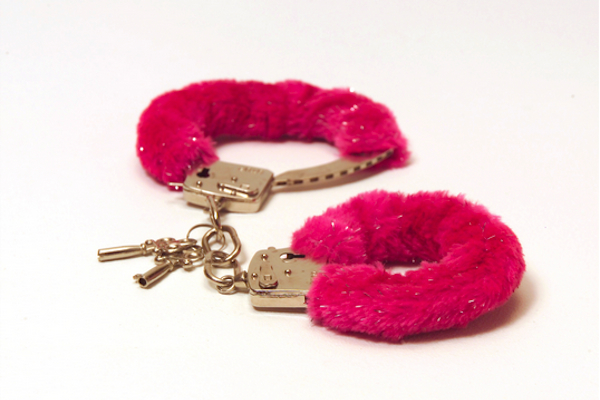Art
Museum of Broken Relationships in Colorado
A few years ago, Dražen Grubišić and Olinka Vištica broke up after a four-year relationship. As they sorted through their belongings, they had an idea – what if they created a safe space for the artifacts of onetime love?
Ten years later, the resulting Museum of Broken Relationships has become an international sensation. In the last two months, the traveling exhibition has visited Paris, Amsterdam, and Boulder. Next, it will head to Taipei, Brazil, and Amsterdam once more. Each time the exhibition visits another city, it grows, thanks to local donations. The collection now includes over 1,000 objects. Grubišić and Vištica are currently deciding the tour schedule for 2014 (of the 20 institutions that have applied to host the exhibition, only about five will be chosen), but Grubišić found some time to grab coffee in the cozy Brokenships Café to tell us a bit more about the collection and where it’s going from here.
How was the exhibition in Boulder, Colorado? Did you travel to the opening?
We always go [to the exhibition opening]. We do the selection there. People always ask, “Is this art? What is this?” My answer is always that one object and one story is definitely not art, but the concept and the way we set it up – that’s art. We create an emotional rollercoaster. We really create this play with emotions that’s art and that’s what art is supposed to be.
Does any one exhibition stand out to you, either because of the people or because of a particular donation?
We always think, “now we’ve seen everything”, and then we get something that’s just like, “Oh, my God.” Some stand out because of the people involved – they have so much enthusiasm – for example, we have so many things from Bloomington. There were two girls there who were really enthusiastic . . . and we got about 60 donations. It’s how much effort you put into it. We got great donations, and it was a really, really nice show.
Do you have a favorite donation?
Not really. It’s so hard because now there are more than 1,000, and we’ve met most of the people [who donated them]. Our point of view is a bit different, because we connect the faces with the object and the story behind [it], but we’re the keepers of the secret. That is really one of my favorite parts . . . this emotional impact. People approach you [at the show] and start saying that they’re grateful for the opportunity [to be part of it] and to be able to move in the other direction, to leave this [relationship] behind. This is sort of a ritual, actually.
So when you had this idea, to start a museum . . .
No, we just called it a museum because we wanted to display the objects in a museum-like manner. There was never the idea of having a museum for real, and it wasn’t even [supposed to be] for people to come and see. It was intended as a secure space for people to leave [donations], because our view of “museum” was of a Croatian-style museum: an empty space, with no visitors. Safe. Things are safe there on their own shelves. They’re not there to be seen. They’re there to be hidden, actually. This changed, of course. But that’s how we envisioned it: to give people the opportunity to get rid of something, write a story, to create this ritual that is missing. Because you have rituals for everything: when you’re born, there’s a ritual. When you go to school, there’s a ritual. If you’re religious, there’s a ritual. You get married or you have a kid – ritual. You get divorced? Uh, nothing!
So you had no idea that it would blow up?
No. We didn’t expect to do something in Zagreb and end up on CNN.
Why such a positive response?
Because it’s really simple. And it’s really sincere. It is sincere from us and from the people who donate. That is really important I think.
Many museums are really pushing to encourage visitor participation. The Museum of Broken Relationships is unique in that it’s participatory by nature. Where do you go from here? Do you have plans for other programs?
We have a lot of plans; [however] we are completely self-financed and function as a private museum. So, finances are keeping [our plans] developing at a slow pace.
We have some plans for the way we collect the objects. For the first time in Amsterdam in the fall, [the organizers] will go to people in specific places – retirement homes and the red light district. Before, anyone could submit, but now we’d like to target some groups that might be interesting. [In Zagreb] we’d like to have workshops with divorced kids, their parents, and so on. There are great things that are going on in psychology right now, psychodrama and different approaches. I think connecting this to the museum… makes sense. For example, once a month we get patients from a mental institution. The doctor approached us… [He] found that it works well for [the patients] to spend one hour here.. then they’re much more open to talking about their problems when they see that they’re not alone.
Has anyone ever tried to donate anything as a testament to their thriving love?
Actually, two guys came in . . . they waited for the right moment, and one placed his donation – a tribute to his love that’s unbroken – on the wall. It was a real intervention. We put it on Facebook later and it got 50 or 60,000 likes! So it lives on in virtual space.
Visit the traveling exhibition of the Museum of Broken Relationships at the Boulder Museum of Contemporary Art until May 26, 2013.
Written by: Elaine Ritchel (@elaineritchel)
Image Source: Museum of Broken Relationships website









